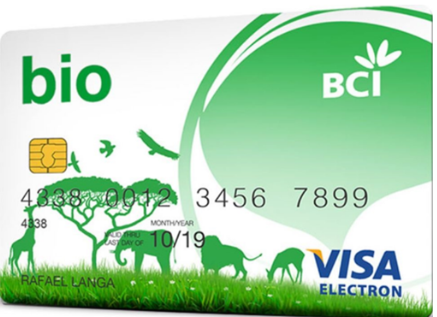This is a project supported by the Foundation for the Conservation of Biodiversity (BIOFUND), through the Bio card, a partnership between BIOFUND and the Commercial and Investment Bank (BCI), which seeks to contribute to the preservation of the rhinoceros, an endangered species, in the Sabie Game Park, in Moamba district.
Published at 21/01/2021
Conclusion of the First project financed by the BCI Bio card

The Sábiè Game Park comprises 25% of the total border of the Kruger National Park (KNP) with Mozambique and is of utmost importance for rhino and elephant conservation efforts, as it acts as a buffer zone, standing between one of the largest remaining concentrations of rhinos worldwide in the KNP to the west and the principal poaching threat emanating from eastern Mozambique.
The project, designed by the MozParks Initiative INC, consisted of the acquisition, installation, and implementation of a safe and efficient monitoring and tracking system to better protect the rhino (black and white), which are concentrated in the south of the Kruger National Park (KNP) in South Africa, and cross the border regularly to the Sábiè Game Park in Mozambique. This activity has as its main objectives to monitor and track the rhino, to improve its protection and contribute to the study of the behavior and its ecological preferences in this Conservation Area.
The project had two phases of implementation, the first being the acquisition of tracking material and the second of placing tracking tags on rhinos.
The placement of tracking tags on rhinos was done with aerial support, by the helicopter and intervention of a specialized veterinary unit (Mozambique Wildlife Services) to anesthetize rhinos, using the following procedure:
- The rhinoceros is detected within the perimeter of the Sábiè Game Park and the team meets to perform the operation;
- The operation takes place within 24 hours after the rhino’s detection and consists of locating the animal, anesthetizing, placing the tracking tag, treating any wounds that it may have and then proceeding to its release;
- Each tag is permanently monitored by the tracking system.
At the same time, as an additional measure to guarantee greater protection, the Sábiè Game Park in collaboration with Saving the Survivors, also adopted the technique of removing rhino horns. This process is carried out while the rhino is sedated, where after cutting, the horns are weighed, labeled, and kept safely stored outside of the Conservation Areas.
This procedure inhibits the slaughter of rhinos by poachers and has shown positive results in reducing the deaths of rhinos in reserves and parks in Zimbabwe and in South Africa, because, unlike elephant tusks, rhino horns grow back after a few years and safe and regular removal can ensure that they are no longer the target of poachers. Learn more about the removal of rhinoceros horns here!
It should be noted that in August 2020, two rhinos who had not been so protected were slaughtered and had their horns brutally removed by poachers in the Sábiè locality.
The rhino monitoring and tracking system financed by BIOFUND through the Bio card, as well as the technique of removing horns in animals, an initiative of the Sábiè Game Park and Saving the Survivors, is expected to contribute to the reduction of rhinos in the country.

